In the dynamic field of physical therapy, the intricacies of vestibular and concussion treatment present unique challenges and opportunities for both clinicians and the general population.
Understanding these disorders and the interplay between them is crucial, especially as the need for specialized care grows.
Further, continuing education is essential for healthcare providers to enhance their skills and knowledge, ensuring they can offer comprehensive care to those in need.
Understanding Vestibular and Concussion Disorders
The vestibular system, integral to our sense of balance and spatial orientation, can be affected by deconditioning, age and various pathological conditions. These disorders can cause dizziness, vertigo, balance issues, and other symptoms that disrupt daily activities.
Concurrently, concussions—traumatic brain injuries that affect brain function—present symptoms like headaches, confusion, dizziness, and cognitive challenges. The overlap of symptoms between these two areas highlights the need for a multi-system approach to diagnosis and treatment.
Why Clinician Education in Vestibular and Concussion Disorders is Important
During a detailed discussion with CORA Physical Therapy’s experts, the importance of dual expertise in both vestibular and concussion fields was emphasized.
Brian Anderson, director of CORA’s sports medicine program, ActiveTracks, noted, “You’re not going to miss vestibular symptoms. You’re going to miss 75% of concussion symptoms.” This statement underscores a critical gap in care that can occur if a healthcare provider is only familiar with one of these areas.
For the General Population: What to Know about Vestibular and Concussion Disorders
For individuals, understanding when to seek help is vital. Symptoms of vestibular disorders and concussions often overlap, making it difficult to determine the cause of dizziness or balance issues.
Recognizing early signs, such as persistent dizziness, confusion after a head injury, or difficulty maintaining balance, is key to seeking timely medical advice. Awareness of these conditions can lead to faster diagnosis and more effective management.
For Clinicians: Advanced Training and Approach
Clinicians must go beyond basic knowledge, engaging in comprehensive training that covers both vestibular and concussion evaluation and treatment.
Ashley Langford, Director of Clinical Excellence at CORA, highlighted the pitfalls of inadequate training: “If I’m a clinician and I know vestibular, but I have not taken any concussion training, I can find something to offer most patients and get away with treating patients effectively. No need to specialize in post-concussive therapy.” This common misconception can lead to suboptimal patient outcomes.
The recommended approach involves a structured training pathway, beginning with a strong foundation in understanding the neck and its potential contributions to symptoms, as many vestibular and concussion symptoms can be exacerbated or mimicked by cervical issues.
“We always start with the neck… and then it moves to vestibular,” explains Anderson. This method ensures that clinicians are equipped to handle a range of symptoms and can accurately differentiate between related conditions.
Expanding Capabilities Through Continuing Education
The discussion also stressed the importance of continuous learning and adaptation in clinical practices. By staying informed about the latest research and advancements in vestibular and concussion continuing education, clinicians can enhance their ability to diagnose and treat these complex conditions more effectively. This ongoing education not only benefits the clinicians by broadening their expertise but also significantly improves patient outcomes.
Concussion and Vestibular Treatment Methods and Case Studies
Effective vestibular and concussion management often involves a combination of physical therapy techniques, medication, and patient education.
Techniques such as vestibular rehabilitation therapy (VRT) are pivotal in treating balance disorders, while cognitive rehabilitation helps in managing the neuropsychological symptoms of concussions.
Growing evidence supports the success of integrated treatment approaches.
